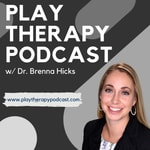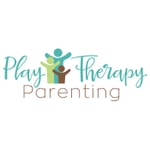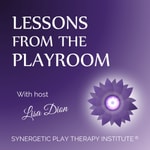Play Therapy Podcast – Details, episodes & analysis
Podcast details
Technical and general information from the podcast's RSS feed.


Recent rankings
Latest chart positions across Apple Podcasts and Spotify rankings.
Apple Podcasts
🇨🇦 Canada - courses
10/08/2025#29🇬🇧 Great Britain - courses
10/08/2025#75🇺🇸 USA - courses
10/08/2025#29🇨🇦 Canada - courses
09/08/2025#21🇬🇧 Great Britain - courses
09/08/2025#50🇺🇸 USA - courses
09/08/2025#25🇨🇦 Canada - courses
08/08/2025#26🇬🇧 Great Britain - courses
08/08/2025#27🇺🇸 USA - courses
08/08/2025#23🇨🇦 Canada - courses
07/08/2025#18
Spotify
No recent rankings available
Shared links between episodes and podcasts
Links found in episode descriptions and other podcasts that share them.
See all- https://www.playtherapynow.com
703 shares
- https://www.playtherapypodcast.com
603 shares
- https://www.ccptcollective.com
471 shares
- https://twitter.com/thekidcounselor
607 shares
RSS feed quality and score
Technical evaluation of the podcast's RSS feed quality and structure.
See allScore global : 68%
Publication history
Monthly episode publishing history over the past years.
191 | Beyond the Diagnosis: How Child-Centered Play Therapy Supports Children with Various Conditions and Diagnoses
Season 1 · Episode 191
vendredi 30 août 2024 • Duration 16:33
In this episode of the Play Therapy Podcast, I respond to a question from Bailey in Texas about the effectiveness of child-centered play therapy (CCPT) for children with NF1, a genetic condition. Bailey is working with a six-year-old client whose symptoms resemble ADHD, and she’s curious about the realistic expectations for therapy outcomes.
I broaden the discussion to address how CCPT can benefit children with various disorders or diagnoses, emphasizing that while play therapy may not change the underlying condition, it significantly improves a child's ability to cope, build resilience, and develop crucial emotional and relational skills.
I also discuss the importance of shifting the focus away from the condition itself and instead highlighting how play therapy fosters self-trust, problem-solving, and emotional regulation. By reframing the conversation with parents, we can help them understand that the true power of CCPT lies in equipping children to navigate their challenges with confidence and competence, regardless of the condition they face.
If you would like to ask me questions directly, check out www.ccptcollective.com, where I host two weekly Zoom calls filled with advanced CCPT case studies and session reviews, as well as member Q&A. You can take advantage of the two-week free trial to see if the CCPT Collective is right for you.
Ask Me Questions: Call (813) 812-5525, or email: brenna@thekidcounselor.com
Brenna's CCPT Hub: https://www.playtherapynow.com
CCPT Collective (online community exclusively for CCPTs): https://www.ccptcollective.com
Podcast HQ: https://www.playtherapypodcast.com
APT Approved Play Therapy CE courses: https://childcenteredtraining.com
Twitter: @thekidcounselor https://twitter.com/thekidcounselor
Facebook: https://facebook.com/playtherapypodcast
Common References:
Cochran, N., Nordling, W., & Cochran, J. (2010). Child-Centered Play Therapy (1st ed.). Wiley.
VanFleet, R., Sywulak, A. E., & Sniscak, C. C. (2010). Child-centered play therapy. Guilford Press.
Landreth, G.L. (2023). Play Therapy: The Art of the Relationship (4th ed.). Routledge.
Bratton, S. C., Landreth, G. L., Kellam, T., & Blackard, S. R. (2006). Child parent relationship therapy (CPRT) treatment manual: A 10-session filial therapy model for training parents. Routledge/Taylor & Francis Group.
Benedict, Helen. Themes in Play Therapy. Used with permission to Heartland Play Therapy Institute.
190 | Summer Breaks in Child-Centered Play Therapy: Strategies for Continuity
Season 1 · Episode 190
jeudi 29 août 2024 • Duration 12:42
In this episode of the Play Therapy Podcast, I address a common issue many of us face every year—how to handle requests from parents to take a break from therapy over the summer. Ethan from Virginia wrote in with a question about managing this situation when parents want to pause sessions due to scheduling conflicts like camps, vacations, and other summer activities. I discuss the potential impact of long breaks on a child's therapeutic progress, the importance of honest communication with parents, and the options available when families want to take time off. I also emphasize the importance of resuming therapy before the school year begins to help ease the transition back to school.
I offer practical strategies for reducing the frequency of sessions instead of stopping them altogether and share how to navigate these conversations with parents in a way that supports the child's ongoing development. This episode is a valuable resource as you prepare for the inevitable summer break requests each year.
If you would like to ask me questions directly, check out www.ccptcollective.com, where I host two weekly Zoom calls filled with advanced CCPT case studies and session reviews, as well as member Q&A. You can take advantage of the two-week free trial to see if the CCPT Collective is right for you.
Ask Me Questions: Call (813) 812-5525, or email: brenna@thekidcounselor.com
Brenna's CCPT Hub: https://www.playtherapynow.com
CCPT Collective (online community exclusively for CCPTs): https://www.ccptcollective.com
Podcast HQ: https://www.playtherapypodcast.com
APT Approved Play Therapy CE courses: https://childcenteredtraining.com
Twitter: @thekidcounselor https://twitter.com/thekidcounselor
Facebook: https://facebook.com/playtherapypodcast
Common References:
Cochran, N., Nordling, W., & Cochran, J. (2010). Child-Centered Play Therapy (1st ed.). Wiley.
VanFleet, R., Sywulak, A. E., & Sniscak, C. C. (2010). Child-centered play therapy. Guilford Press.
Landreth, G.L. (2023). Play Therapy: The Art of the Relationship (4th ed.). Routledge.
Bratton, S. C., Landreth, G. L., Kellam, T., & Blackard, S. R. (2006). Child parent relationship therapy (CPRT) treatment manual: A 10-session filial therapy model for training parents. Routledge/Taylor & Francis Group.
Benedict, Helen. Themes in Play Therapy. Used with permission to Heartland Play Therapy Institute.
181 | The Addiction We're Ignoring: Screen Time and Child Mental Health
Season 1 · Episode 181
jeudi 1 août 2024 • Duration 23:45
In this episode, I dive deep into a concerning trend in child and adolescent psychotherapy: the use of video games in therapy. I address an email from Carolyn in Vermont, who asks about therapists using video games to engage "difficult" clients, often using person-centered language to justify this approach.
I express my strong concerns about this practice, arguing that it dilutes the essence of therapy and may stem from laziness. I emphasize the importance of emotional engagement in child therapy, especially from a child-centered model, and highlight the potential harm of increased screen time for children who may already be addicted to video games.
Drawing from my book on reducing screen time for children, I discuss the neurobiological impacts of excessive gaming and screen use. I stress the importance of returning to foundational therapeutic models rather than seeking "innovative" approaches that may compromise effective treatment. I also touch on the global recognition of screen addiction, citing examples from China's strict regulations on youth gaming.
I conclude by calling on therapists to become advocates for children's health and well-being by educating parents about the dangers of excessive screen time and actively monitoring screen use during consultations. I emphasize that this is a critical issue that requires our immediate attention and action.
If you would like to ask me questions directly, check out www.ccptcollective.com, where I host two weekly Zoom calls filled with advanced CCPT case studies and session reviews, as well as member Q&A. You can take advantage of the two-week free trial to see if the CCPT Collective is right for you.
Ask Me Questions: Call (813) 812-5525, or email: brenna@thekidcounselor.com
Brenna's CCPT Hub: https://www.playtherapynow.com
CCPT Collective (online community exclusively for CCPTs): https://www.ccptcollective.com
Podcast HQ: https://www.playtherapypodcast.com
APT Approved Play Therapy CE courses: https://childcenteredtraining.com
Twitter: @thekidcounselor https://twitter.com/thekidcounselor
Facebook: https://facebook.com/playtherapypodcast
91 | Play Therapy's "Progress Puzzle": Navigating Norms, Progress, and Expectations
Season 1 · Episode 91
lundi 25 septembre 2023 • Duration 21:59
90 | Failure To Fix Theme In Play Therapy
Season 1 · Episode 90
mercredi 20 septembre 2023 • Duration 09:29
89 | Navigating Messy Play: Balancing Client Needs And Cleanliness In The Playroom
Season 1 · Episode 89
mardi 12 septembre 2023 • Duration 16:46
88 | Fixing Play Theme In Play Therapy
Season 1 · Episode 88
jeudi 7 septembre 2023 • Duration 15:18
87 | Q&A: Working With Kids With Sexual Behavior Or Abuse Backgrounds
Season 1 · Episode 87
samedi 2 septembre 2023 • Duration 24:42
- Accept and be aware of your own discomfort
- Know your own boundaries
- Effectively use limit setting
Cochran, N., Nordling, W., & Cochran, J. (2010). Child-Centered Play Therapy (1st ed.). Wiley.
VanFleet, R., Sywulak, A. E., & Sniscak, C. C. (2010). Child-centered play therapy. Guilford Press.
Landreth, G. L. (2002). Play therapy: The art of the relationship (2nd ed.). Brunner-Routledge.
Bratton, S. C., Landreth, G. L., Kellam, T., & Blackard, S. R. (2006). Child parent relationship therapy (CPRT) treatment manual: A 10-session filial therapy model for training parents. Routledge/Taylor & Francis Group.
Benedict, Helen. Themes in Play Therapy. Used with permission to Heartland Play Therapy Institute.
86 | Broken Play Theme in Play Therapy
Season 1 · Episode 86
mercredi 30 août 2023 • Duration 10:33
Cochran, N., Nordling, W., & Cochran, J. (2010). Child-Centered Play Therapy (1st ed.). Wiley.
VanFleet, R., Sywulak, A. E., & Sniscak, C. C. (2010). Child-centered play therapy. Guilford Press.
Landreth, G. L. (2002). Play therapy: The art of the relationship (2nd ed.). Brunner-Routledge.
Bratton, S. C., Landreth, G. L., Kellam, T., & Blackard, S. R. (2006). Child parent relationship therapy (CPRT) treatment manual: A 10-session filial therapy model for training parents. Routledge/Taylor & Francis Group.
Benedict, Helen. Themes in Play Therapy. Used with permission to Heartland Play Therapy Institute.
85 | Burying Or Drowning Theme
Season 1 · Episode 85
jeudi 24 août 2023 • Duration 08:10
Cochran, N., Nordling, W., & Cochran, J. (2010). Child-Centered Play Therapy (1st ed.). Wiley.
VanFleet, R., Sywulak, A. E., & Sniscak, C. C. (2010). Child-centered play therapy. Guilford Press.
Landreth, G. L. (2002). Play therapy: The art of the relationship (2nd ed.). Brunner-Routledge.
Bratton, S. C., Landreth, G. L., Kellam, T., & Blackard, S. R. (2006). Child parent relationship therapy (CPRT) treatment manual: A 10-session filial therapy model for training parents. Routledge/Taylor & Francis Group.
Benedict, Helen. Themes in Play Therapy. Used with permission to Heartland Play Therapy Institute.

